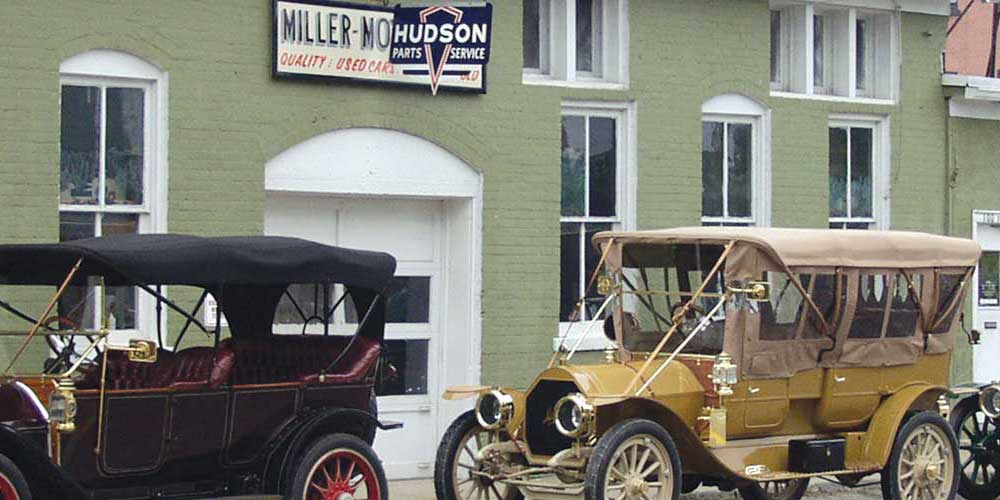By Robert Tate, Automotive Historian and Researcher
Images courtesy of the National Automotive History Collection
Posted: 05.01.2017
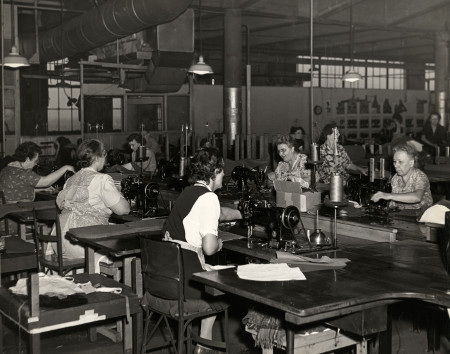 Women employed at Studebaker working on seating upholstery in the 1940s.During a time when much of the automotive world, from manufacturing to motorist, was primarily a male-dominated culture, Studebaker chose to rebuff trends by employing and marketing directly to women throughout the 1940s.
Women employed at Studebaker working on seating upholstery in the 1940s.During a time when much of the automotive world, from manufacturing to motorist, was primarily a male-dominated culture, Studebaker chose to rebuff trends by employing and marketing directly to women throughout the 1940s.
Indeed, it was Studebaker’s strategic pivot to include women in the manufacturing and advertising process that made the 1940s Studebaker a valued car.
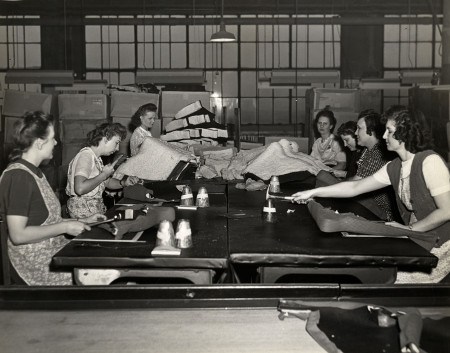 Women were heavily involved in the manufacturing process at Studebaker's South Bend, Ind. passenger car plant.The first three images of this story highlights the careers of women working on the assembly line manufacturing interior trim seating for Studebaker automobiles. At that time, much of the manufacturing for Studebaker models took place at its South Bend, Ind. passenger factory. The plant provided 126 acres of manufacturing floor space for workers.
Women were heavily involved in the manufacturing process at Studebaker's South Bend, Ind. passenger car plant.The first three images of this story highlights the careers of women working on the assembly line manufacturing interior trim seating for Studebaker automobiles. At that time, much of the manufacturing for Studebaker models took place at its South Bend, Ind. passenger factory. The plant provided 126 acres of manufacturing floor space for workers.
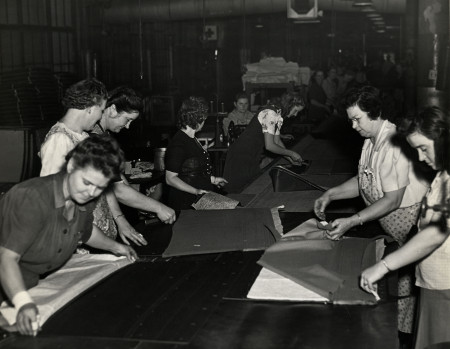 More women working on automotive interior at the Studebaker factory in South Bend, Ind., where the company was founded.Women employed at Studebaker also played a significant role in the manufacturing of war-time machinery during WWII. Today, their efforts and hard work are now a part of our heritage and automotive history.
More women working on automotive interior at the Studebaker factory in South Bend, Ind., where the company was founded.Women employed at Studebaker also played a significant role in the manufacturing of war-time machinery during WWII. Today, their efforts and hard work are now a part of our heritage and automotive history.
During the wartime effort, the “Rosie the Riveter” character became a great, empowering figure based on the late Howard Miller’s famous 1942 “We Can Do It” poster artwork. This campaign highlighted many great women who were welders, machinists and, of course, riveters who had participated during the wartime efforts. Some historians have said that Miller's famous artwork was modeled after Michigan factory worker, Ms. Geraldine Doyle.
During the war, Studebaker had built 63,789 Wright Cyclone nine-cyclone radial engines for the legendary B-17 Flying Fortresses on its assembly lines. The automotive company also churned out M29 Weasel tracked vehicles along with Wright Cyclone engines and other military trucks.
After the war ended, the automotive companies began to once again sell and market their automotive products. A few months after V-J Day, the 1946 Studebaker Skyway Champion models had rolled once again on civilian production lines. After the war, women became more interested in purchasing new automobiles.
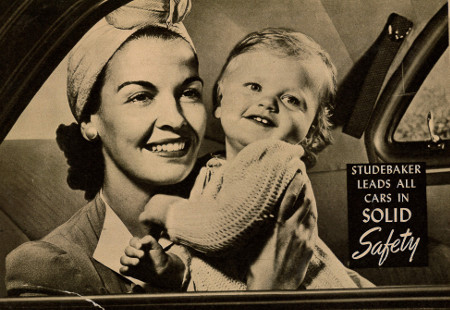 A 1941 advertising clip promoting Studebaker’s new safety features.During the early 1940s, Studebaker highlighted women in their advertising campaigns. Company execs promoted new safety features in an attempt to make women and their children feel more safe and comfortable when riding in a Studebaker product. The company used taglines such as, “Studebaker Leads All Cars In Solid Safety” as a reflection of their commitment to safety.
A 1941 advertising clip promoting Studebaker’s new safety features.During the early 1940s, Studebaker highlighted women in their advertising campaigns. Company execs promoted new safety features in an attempt to make women and their children feel more safe and comfortable when riding in a Studebaker product. The company used taglines such as, “Studebaker Leads All Cars In Solid Safety” as a reflection of their commitment to safety.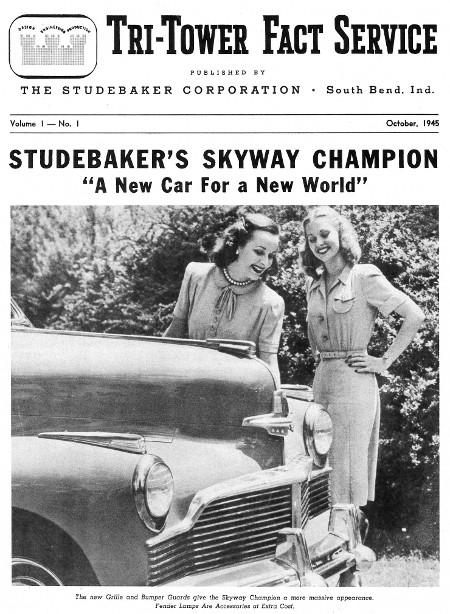
In 1945, Studebaker published “Tri Tower Fact Service” magazine, and one of the issues featured two women on the cover admiring the front end of a Studebaker Skyway Champion model for 1946. In Oct.1945, Studebaker had announced its first post-war automobile, which many women thoroughly had enjoyed.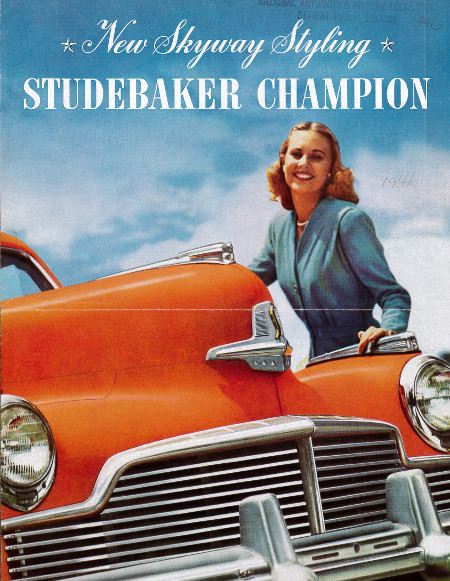 Studebaker advertising from 1945.After the war, Studebaker continued to advertise their vehicles with women, and as technology improved, Studebaker started with new color schemes to further market their vehicles to women.
Studebaker advertising from 1945.After the war, Studebaker continued to advertise their vehicles with women, and as technology improved, Studebaker started with new color schemes to further market their vehicles to women.
Margaret Walsh, University of Nottingham, UK, said, “Many Americans, especially working-class Americans, did not gain auto-mobility before World War Two. It would take what Avner offer has called the automobile frenzy of the 1950’s before the car would be in mass ownership. This frenzy in reality started in the late 1940s as manufacturers expanded production to meet pent-up demand. Registrations increased from 25.6 million in 1945 to 40.3 million in 1950.”
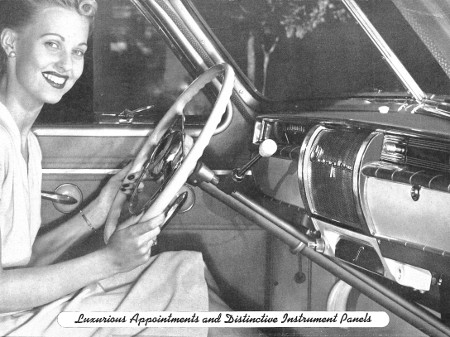 Studebaker advertising from 1946.During the second half of the 20th century, American women became a major market for the sales of automobiles. Their rising participation in the labor force and other management positions further provided many women with the ability to buy their own vehicles.
Studebaker advertising from 1946.During the second half of the 20th century, American women became a major market for the sales of automobiles. Their rising participation in the labor force and other management positions further provided many women with the ability to buy their own vehicles.
In conclusion, women have entered the work force in greater numbers today and are earning better salaries and holding positions of greater responsibility – all of which has had tremendous impact in the automotive market. For example, Mary Barra, who was appointed CEO and Chairperson of General Motors in 2014, is the first female CEO of a global automotive company.
For further information on photos please visit http://www.detroitpubliclibrary.org/ or email This email address is being protected from spambots. You need JavaScript enabled to view it.. Please do not republish the story and/or photographs without permission of MotorCities National Heritage Area. (Bibliography: Hall E. Asa & Lang worth M. Richard. “The Studebaker Century A National Heritage” 1983; Walsh, Margaret. “Gender and Auto-mobility Selling Cars to American Women after the Second World War” University of Nottingham, Nottingham, UK. “A trip through the Studebaker factory” The Studebaker Corporation 1952. The Studebaker Corporation Tri-Tower Fact Service “Studebaker's Skyway Champion A new car for a new world,” October 1945.)
If you would like to contribute an article for the MotorCities newsletter, email This email address is being protected from spambots. You need JavaScript enabled to view it. or call 313-259-3425.


